There it is again — your old nemesis.
It keeps torturing you year after year. Every time you think you’ve conquered it, it comes back and ruins your plans.
Procrastination!
You start a new project, set a new goal, and it feels like you’re going to crush it this time. You get a surge of excitement and inspiration.
But then a few days pass and the initial motivation is gone. The procrastination is back and you’re wasting time and not making any progress again.
After years of going through this cycle, it’s easy to start feeling desperate and hopeless.
It feels like you’ll never get rid of procrastination and create the life you want. You think, “Why is it so easy for others but I can’t get myself to do shit?! Was I just born lazy?”
Luckily for us procrastinators, we don’t have to fight that battle alone anymore. Each app on this list focuses on helping you beat a different aspect of procrastination, and they’re all important.
Let’s dive in.
1. Toggl
Download for Android | Download for iOS

What is Toggl?
It’s a simple app that allows you to track how much time you spend working on each project.
You simply press start and the timer is running. After you’re done with the task, or you need a break, press stop and the work period is recorded.
That’s where the Toggl Reports come in.
At the end of each day (or week, or month) you can go to the reports section and see a beautiful graph of how you spend your time:

If you’ve labeled and color-coded your projects, you can see exactly where your time went this week. In the detailed report you can see how much time you spend working every day and on each individual project.
Here’s how it looks:
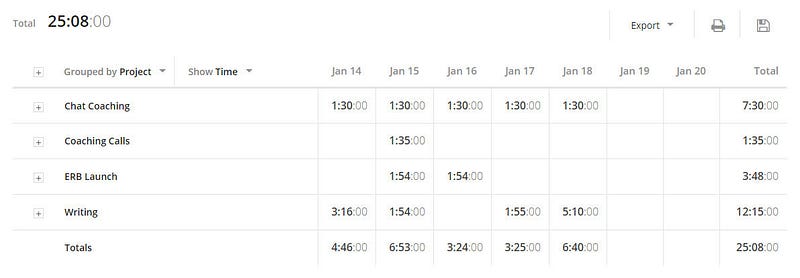
In case you forget to track a time period, Toggl also has a manual mode. You can easily input the working hours after the day is done and still have an accurate report later on.
How to use Toggl?
Just like any other tool, it has the potential to become a time-wasting toy. If you don’t focus on what’s important, Toggl will become just another excuse for procrastination.
Here are some guidelines to stick to:
- Only log your productive time — don’t log your leisure time like social media, meals, sleep, bathroom breaks, etc. Time only the projects that will make a difference and that you’re normally procrastinating on.
- Group the “busy work” in one project — there is no point to track all the menial tasks in detail like administration and maintenance separately.
- Don’t use fancy tags: “on mobile”, “at home”, “at the office” — these don’t matter.
- Do a weekly review — at the end of each week look at the report and ask yourself: 1) What went well this week? 2) How can I improve next week?
2. Offtime
Download for Android | Download for iOS

What is Offtime?
Nowadays most of our external distractions come from our mobile devices. You’re more likely to start procrastinating if you’re interrupted by calls, notifications, or texts.
A great way to deal with those is too set up a system that blocks all interruptions on your phone — Offtime does this brilliantly.
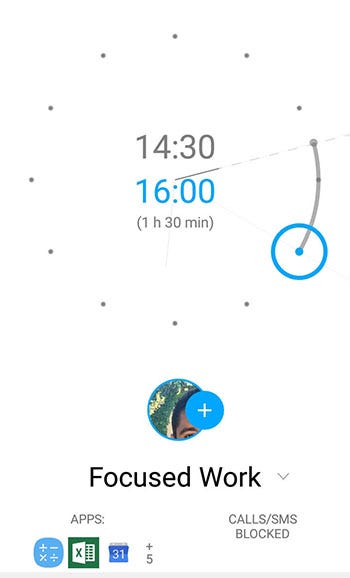
It gives you the option to temporarily disable all the distracting apps, messages, and calls with just one tap. All you have to do is set the time period for which you want to do focused work and push start. When the timer is running Offtime will not allow you to open distracting apps.
The list of apps that you want to block is a preset, so you only have to configure it once. It gives you the option to set a few exceptions for apps that you might use while working like a calendar, calculator, Evernote etc.
You can also enable/disable calls and texts to make sure nobody interrupts you in the middle of your work. If you’re worried about missing emergencies, you can whitelist a few contacts that will still be able to call you even if the timer is running.
How to use Offtime?
Using the app to manually turn on the timer is great. You can go into “deep work” any time you want at the press of a button.
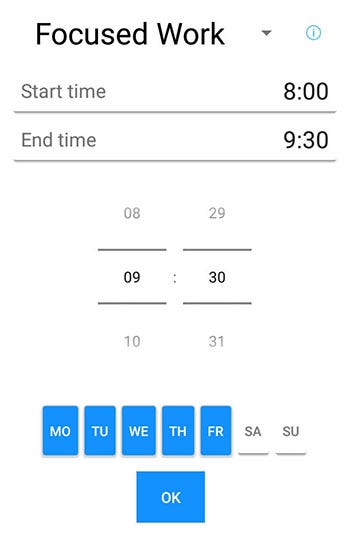
Where it really shines though, is the option to create pre-set schedules.
The schedules are periods in the week that you typically want to use for uninterrupted work.
So say you want to focus for 90 mins starting at 8 am every workday. All you have to do is pre-set the periods for the week once and the app will automatically turn on the “focus mode” every day for you.
I recommend that you create a consistent schedule with the same focused periods for the whole week. It’s easy to procrastinate when you don’t have a pre-set schedule. But if you train yourself to work during certain hours, you will be more productive.
TECHNICAL NOTE: If you’re still able to open the distracting apps while the timer is running, check the Offtime settings. There are 3 different blocking methods that it uses. If the default one doesn’t work for you try one of the others.
3. Brain.fm
Download for Android | Download for iOS

What is Brain.fm?
Brain.fm specializes in playing music to help you focus when you’re working or studying.
So what’s so special about it? Why not play your favorite tracks on Spotify?
Well, instead of playing your everyday music Brain.fm uses a special technology that they call Dynamic Attending Theory (DAT). It’s designed to help your brain focus.
If you’re interested in learning more about the science behind the technology check out their Science and Research page.
Using the app is as simple as opening it up and tapping on the “listening mode” that you want, and the music starts playing. You have options for Focus, Sleep, Recharge, and Meditation.
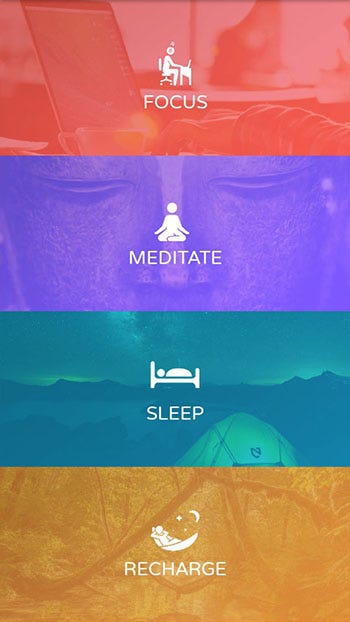
- Focus mode is great for when you’re trying to perform. It delivers fast-paced and intense tracks that keep you in the zone.
- Sleep and Recharge modes play chill and relaxed tracks that you can use while napping.
- Meditate — If you like unguided meditation to train your internal focus, the meditation tracks are perfect for it.
There are tons of different tracks so you never get tired of hearing the same repetitive music. In case you don’t like what’s playing you can skip to the next one or choose a different style from their categories:
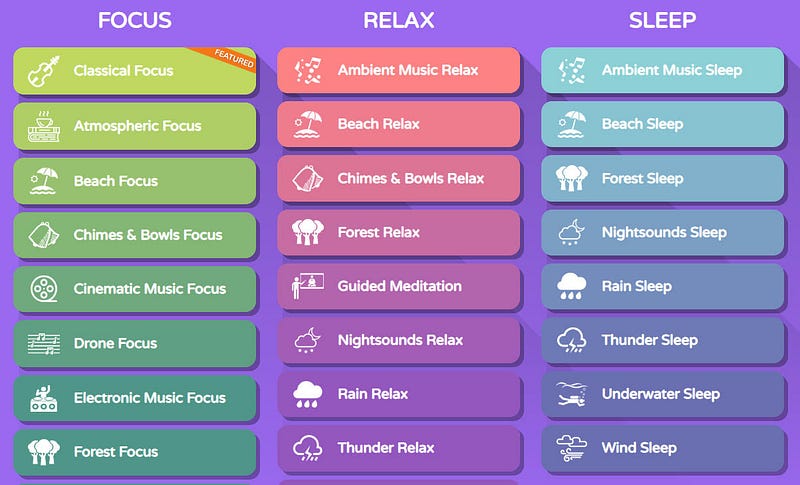
How to use Brain.fm?
To take full advantage of the DAT technology use headphones or earbuds (which also help block out external noise.)
Beside the focused mode, make sure you try using it if you’re having trouble falling asleep or if you’re doing power naps during the day. I find that my power naps are more effective if I listen to Brain.fm.
4. StickK
Download for Android | Download for iOS

What is StickK?
When you’re working alone, it’s very easy to procrastinate and delay your projects. You don’t have anybody holding you accountable and there are no negative consequences for postponing your work.
StickK solves this problem by helping you put your money where your mouth is. Meaning, you lose money if you don’t do what you said you were going to do.
StickK is an app that helps you put your money where your mouth is. Meaning, you lose money if you don’t do what you said you were going to do.
Here’s how it works:
- Set a goal and commit to doing it for a period of time. (E.g. “I will go to the gym 4 times every week for a whole month.”)
- Set a sum of money that you lose if you fail. (like a $100)
- Decide who will get your money if you fail.
- Invite supporters and a referee. (The referee is the person who will confirm if the goal was successful.)
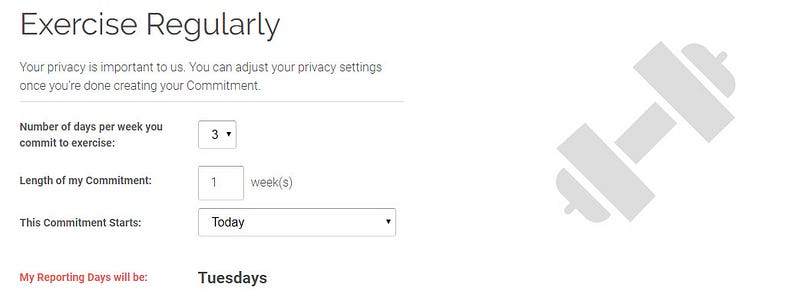
The whole process of setting a new commitment is simple and it takes about 5 minutes.
How to use StickK?
Here are a few tips about how to make your commitments more effective:
1. Set short-term commitments — don’t commit for a whole month or a year. Stickk (ha-ha) to a week at most so you can adjust the goal along the way.
2. How much money? — The key here is to pick a sum that will be painful enough to motivate you into action but it doesn’t bankrupt you if you fail. So even if you fail on some weeks you can still keep going.
3. Who gets your money if you fail? — You have a few options here: charity, anti-charity, somebody you know. The most effective is somebody you don’t like. If you fail, not only will you lose money, but somebody you hate will get it.
4. Referee — the person that will hold you accountable. It should be someone that can confirm that you did it. Make sure that there is absolutely no way to cheat. (E.g. If you were aiming to go to the gym every day, you should send your referee a selfie from the gym. Preferably with something that can’t be Photoshopped like today’s news in the background.)
5. Supporters — you can also add friends and family members for extra accountability. They don’t have any direct role in the commitment, but can offer you extra encouragement.
6. Set a realistic goal — this time you have real money on the line. You don’t want to lose it just because you set a ridiculous goal. Start with something easy for the first week and gradually ramp up the challenge.
5. FocusMate

What is FocusMate?
You’ve probably heard of the benefits of having an accountability buddy. Somebody that will work with you on your goals and help you stay on track.
Unfortunately, finding a friend that is reliable and available isn’t easy.
FocusMate changes all that — it makes finding an accountability buddy instant and painless. Using online video calls, it automatically pairs you with a partner, who makes sure you show up and do the work.
Since the app automatically matches you with random people, finding an accountability buddy takes just a minute.
Here’s how it works:
- Schedule a work period in your FocusMate calendar (similar to scheduling an appointment in a traditional calendar app).
- FocusMate automatically matches you with a stranger.
- You show up at the scheduled time to meet your accountability buddy — Typically, you start with a quick greeting and state your goal for this session (e.g. I’m going to use the time to write a blog post).
- Start working — you turn off your mic and leave your camera on. That way your accountability buddy can see that you’re still there and working and there is no noise to distract you. The focus sessions are 50 minutes long.
- End the session and recap — when the time is up, you take another minute to share your results with your partner and say “thank you and goodbye”.
Here’s how the FocusMate calendar looks like when you’re setting it up:
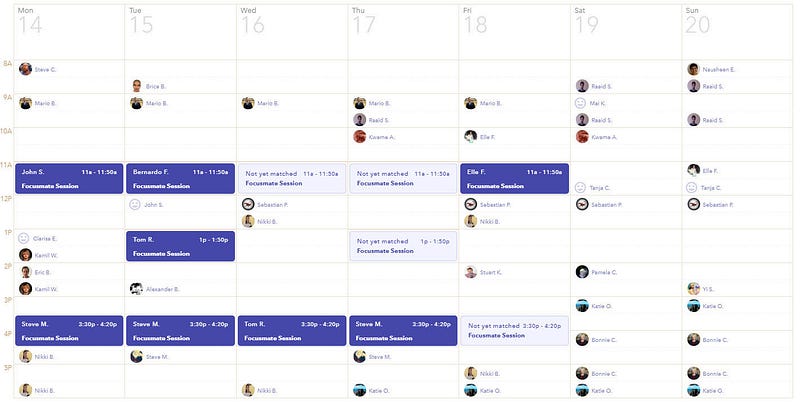
Using FocusMate will force you to show up on time and stay focused. It also forces you to work in scheduled periods of time and create a weekly schedule — all of these will help to overcome procrastination.
How to use FocusMate?
If you’re just starting out, or if you have a hard to predict your schedule, I recommend that you do not set a schedule for the whole week. Book your appointments for the next 1–2 days instead.
In case something comes up, you can cancel the scheduled session. Just make sure you do it at least a few hours before so your accountability partner can get matched with somebody else.
6. Coach.me
Download for Android | Download for iOS

What is Coach.me?
Coach.me is an online platform that helps you find an experienced coach to help you with your goals.
On the platform, you can find coaches that specialize in most self-improvement categories like Productivity, Fitness, Diet, etc.

Once you pick your category, you’ll see a list of the available coaches with a short introduction about what they specialize in.
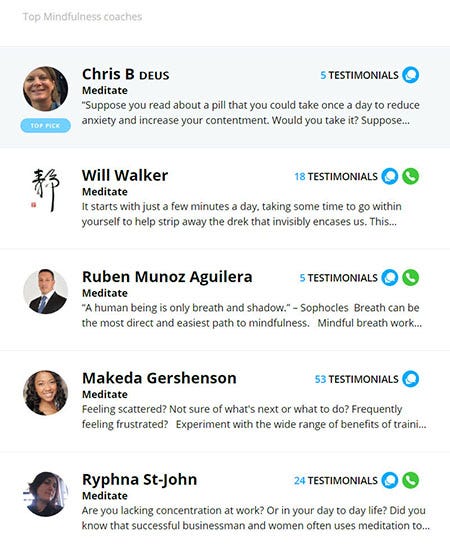
The price for hiring somebody is $14.99/week (or $64.99/month) and you have a 3-day free trial to see if you’re a good match.
How can this be so cheap? Sounds too good to be true?
It is affordable because the coaching is done by email, not in real time. (Although, if you want more extensive help you can hire a coach for online video calls for a higher price.)
With the chat coaching, you’ll get personal communication from your coach every day (typically 1–2 emails). They can help you set your initial goal, create your strategy, and hold you accountable every day. In addition, you can send questions any time you want and you’ll get a response within 24 hours.
How to use Coach.me?
Since there are so many coaches to choose from, I recommend that you spend some time researching before you hire somebody. Check their profile page and see if what they specialize in relates to your needs.
Pick a coach that has a good track record. If they have more than 20 testimonials it means that they’ve been on the platform for at least a year and are actively coaching many people. (The testimonials are controlled by the app and the coaches can’t fake them.)
Also, take some time to research them off the coach.me platform. See exerpienced coaches usually have active blogs, social media accounts, or YouTube channels.
Some tips about how to make your Coach.me experience more effective:
- Before you hire someone make sure your goal is clear and specific.
- Enable notifications in the app so you don’t miss any messages from your coach.
- Ask a ton of questions. Your coach is not just for accountability. They can give you advice and help solve your challenges more quickly.
- Use me’s tracker to keep a journal of your goal — in addition to the coaching, the app has a free habit tracker to check-in your goal every day. It can also show you weekly and monthly reports of how consistent you are.
7. Todoist
Download for Android | Download for iOS

What is Todoist?
Most to-do apps fall short in one or two categories, making them a deal breaker.
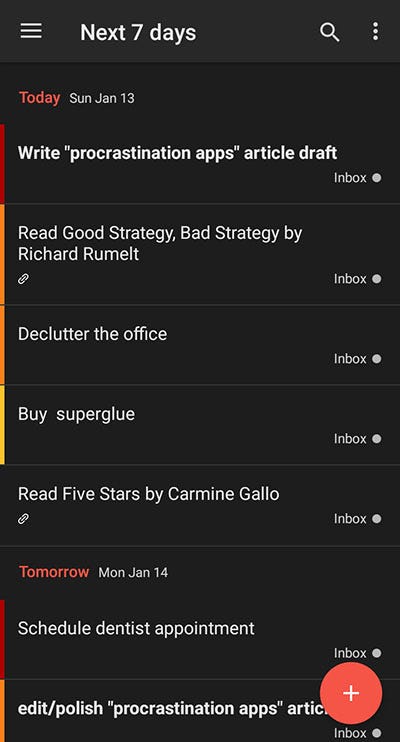
Here are the key advantages that set Todoist apart from other to-do apps:
- It’s got a free plan that anyone can use. (the premium version is just $3/month)
- It’s available on all devices and platforms (Android, iOS, Mac, Windows, Chrome) so you can use it on the road or while working on a computer.
- You can prioritize your tasks by color and order.
- It’s got a quick, easy to use, and beautiful interface.
- You can quickly reschedule overdue tasks.
- You can quickly prioritize your tasks by color and reorder them.
In addition to these basic functions Todoist has a few advanced features for power users:
- It’s got hotkeys that make your task management faster.
- You can filter and tag your tasks.
- You can set custom filters to show only certain tasks.
- You can categorize your tasks in different projects.
- You can share your task lists with other people.
- You can create recurring tasks.
- You can attach comments to each task.
- You can add websites links to each task.
How to use Todoist?
The problem with procrastinators is that we create these huge to-do lists but never do anything about them. It’s just wishful thinking. So if you don’t plan correctly, even the best to-do app ends up being a time wasting toy.
That’s why it’s important to use it in the right way to make it effective.
Here are a few tips about how to make Todoist work for you:
- Create your list of task on the night before — that way when you wake up on the next morning you only have to review it and go.
- Estimate how long each task is going to take — we always underestimate how much a task is going to take. If you write a simple time estimate in the title of each task, it’s going to make your list more realistic and achievable.
- Think about the time period in which you’re going to do the task — we also overestimate the free time that we have. So instead of creating a huge list and assigning it for tomorrow, first check your schedule. Think about how much free time you’ll have to work on your list. And schedule at which time in the day you’re actually going to do the work.
What to Do After Installing the Apps
Most of us are tempted to search for the magic pill and find a miracle app that will solve the problem for us — that’s not how it works.
The tools above work, but only if you use them in the right way.
So don’t go in blindly and hope for the best. Learn from my trial and error and get the most out of the tools.
I’ve experimented with these apps for years and found out what works and what doesn’t. Under each one, I’ve given you tips and tricks about how to make them more effective — use them, and use them now.
If you wait, the procrastination is only going to get worse.
Looking at your future, there are two scenarios that might happen a year from now:
- You’ll wish that you have started today. Or…
- You’ll be grateful that you took immediate action and decided end procrastination today.
Which one do you prefer? If it’s the second one — do it now.
In the end, I’ll leave you with this paraphrased poem to ponder:
“Unhappy is he who does his work postpone, and to tomorrow would the search delay. His lazy morrow will be like the one today.
But is one day of ease too much to borrow? Yes, it is: for yesterday was once tomorrow.”